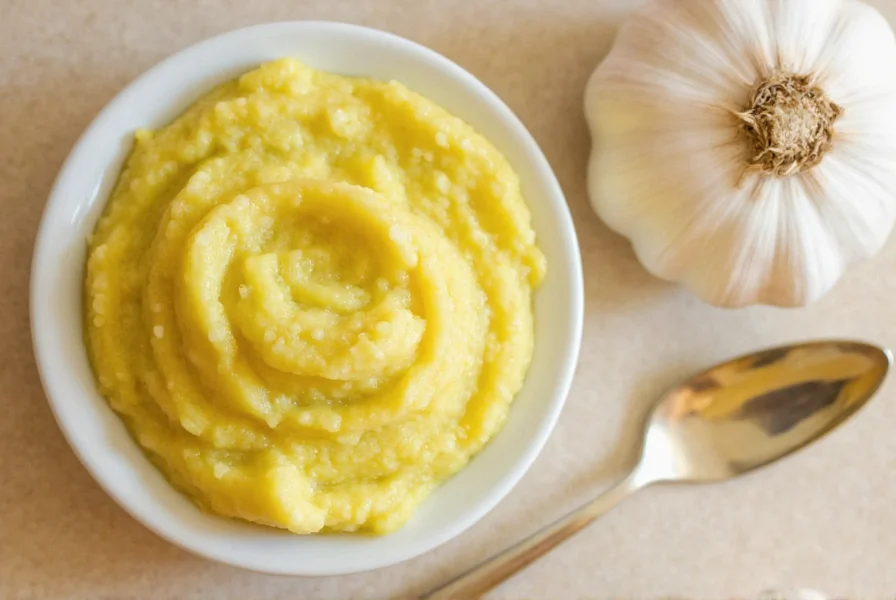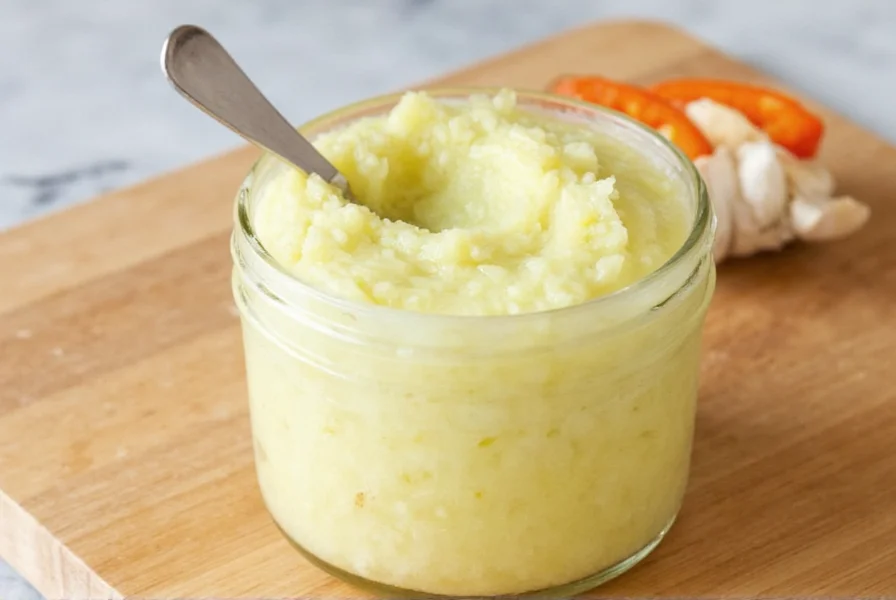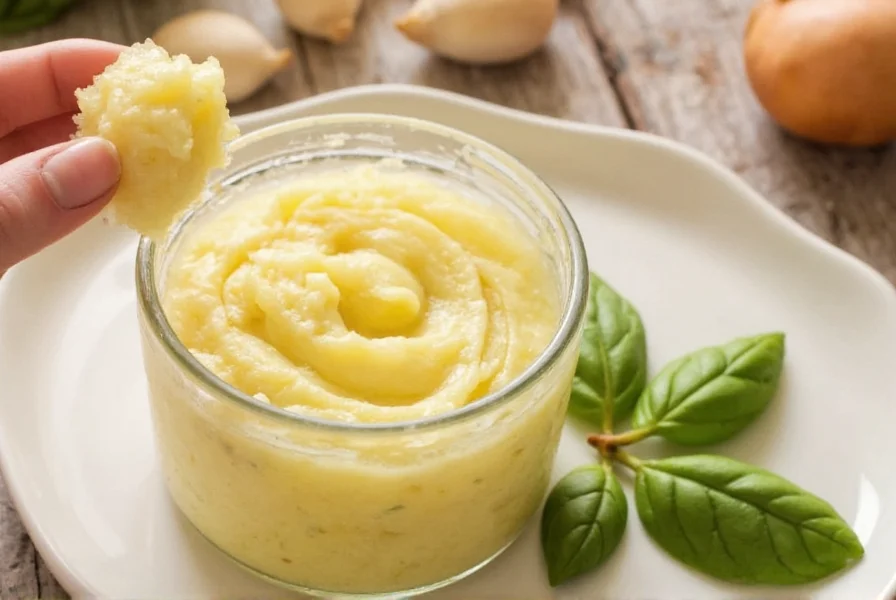Creating your own ginger and garlic paste transforms meal preparation by providing instant access to foundational flavors. This dynamic duo combines ginger's bright, slightly spicy warmth with garlic's pungent depth, forming the aromatic base for countless global cuisines. Chefs and home cooks alike rely on this paste to streamline cooking without sacrificing authentic taste.
Why Ginger Garlic Paste Belongs in Your Kitchen
The primary advantage of maintaining a ginger garlic paste supply lies in efficiency. Peeling and mincing these pungent ingredients consumes valuable cooking time while releasing volatile compounds that dissipate quickly. The paste preserves these essential oils, ensuring maximum flavor impact with minimal effort. This preparation method particularly benefits those following traditional Indian, Southeast Asian, and Middle Eastern recipes where both ingredients appear frequently.
When evaluating homemade versus commercial options, consider these key differences:
| Factor | Homemade Paste | Store-Bought Paste |
|---|---|---|
| Flavor Freshness | Bright, vibrant, complex | Often muted or artificial |
| Ingredient Control | 100% natural, no additives | May contain preservatives |
| Cost Efficiency | Approximately $0.50 per ounce | Average $1.25 per ounce |
| Shelf Life | 2-3 weeks refrigerated | 3-6 months unopened |
Creating Perfect Ginger Garlic Paste at Home
Producing professional-quality ginger garlic paste requires only three components: fresh ginger root, garlic cloves, and a neutral oil or water. The optimal ratio maintains equal parts by weight for balanced flavor. Many cooks discover that using slightly more ginger creates a brighter profile suitable for seafood dishes, while additional garlic works better for meat-based recipes.
Follow these precise steps for foolproof preparation:
- Peel 1 cup of fresh ginger root and 1 cup of garlic cloves
- Rinse thoroughly and pat completely dry
- Combine in food processor with 2 tablespoons of neutral oil
- Pulse until smooth, scraping sides periodically
- Add additional oil only if necessary for desired consistency
- Transfer to sterilized glass container with tight-fitting lid

Optimal Storage Techniques for Maximum Freshness
Proper storage determines how long your ginger garlic paste maintains peak quality. Refrigeration in an airtight container keeps it fresh for 2-3 weeks, while freezing extends usability to 6 months. Many experienced cooks portion the paste into ice cube trays before freezing, creating convenient single-use portions that thaw rapidly when needed.
When storing ginger garlic paste, always:
- Use clean utensils to prevent bacterial contamination
- Keep container away from strong-smelling foods
- Place oil layer on top before refrigerating to create barrier
- Label with preparation date for freshness tracking
Culinary Applications Across Global Cuisines
Ginger garlic paste serves as the flavor foundation in numerous international dishes. In Indian cooking, it forms the base for virtually all curry preparations, typically fried in oil until the raw smell disappears before adding other spices. Southeast Asian recipes frequently incorporate the paste into marinades for satay and other grilled meats, while Middle Eastern cuisine uses it in kebab mixtures and rice dishes.
For best results when using ginger garlic paste in your cooking:
- Add to hot oil first to bloom flavors before other ingredients
- Use 1 tablespoon paste per serving as standard substitution
- Adjust quantity based on desired intensity (start conservative)
- Combine with other wet ingredients to prevent burning
Troubleshooting Common Ginger Garlic Paste Issues
Occasionally, homemade paste may develop separation, discoloration, or off-flavors. These issues typically stem from improper preparation or storage techniques. If your paste separates, simply stir thoroughly before use. Discoloration usually indicates oxidation from air exposure—minimize this by pressing plastic wrap directly onto the paste surface before sealing container.
When encountering flavor imbalances:
- Excessively sharp taste: Add small amount of neutral oil and blend
- Weak flavor: Increase quantity gradually in recipe
- Bitter notes: Ensure using fresh, high-quality ingredients
- Mold development: Discard entire batch immediately

Substitution Guidelines for Recipe Success
Understanding proper substitution ratios ensures recipe success when using ginger garlic paste instead of fresh ingredients. As a general rule, 1 teaspoon of paste equals one small clove of garlic plus 1/2 inch of ginger. This conversion works well for most savory applications, though delicate dishes may require slight adjustments.
When substituting in recipes:
- Reduce added salt slightly as paste concentrates flavors
- Consider omitting additional ginger or garlic in recipe
- Adjust cooking time since paste incorporates faster than fresh
- For raw applications, use smaller quantities to avoid overpowering
Frequently Asked Questions
How long does homemade ginger garlic paste last in the refrigerator?
Properly stored in an airtight container with a thin layer of oil on top, homemade ginger garlic paste maintains freshness for 2-3 weeks in the refrigerator. Always use clean utensils when removing portions to prevent contamination and maximize shelf life.
Can I freeze ginger garlic paste for long-term storage?
Yes, freezing is the most effective method for long-term storage of ginger garlic paste. Portion the paste into ice cube trays, freeze solid, then transfer cubes to airtight freezer bags. Properly frozen, the paste retains optimal flavor and quality for 5-6 months without significant degradation.
What's the ideal ginger to garlic ratio for versatile cooking paste?
The standard 1:1 ratio by weight creates a balanced paste suitable for most applications. However, many professional chefs adjust based on intended use—increasing ginger proportion for seafood dishes (1.5:1) and garlic for meat preparations (1:1.5). Experiment with small batches to discover your preferred balance for different cuisines.
How does ginger garlic paste affect cooking time compared to fresh ingredients?
Ginger garlic paste incorporates more quickly than fresh ingredients since the cell structure has already been broken down. When using paste, reduce the initial sautéing time by approximately 60-70% compared to fresh. For example, where a recipe might call for 5 minutes of cooking fresh ginger and garlic, paste typically requires only 1-2 minutes to develop optimal flavor without burning.











 浙公网安备
33010002000092号
浙公网安备
33010002000092号 浙B2-20120091-4
浙B2-20120091-4